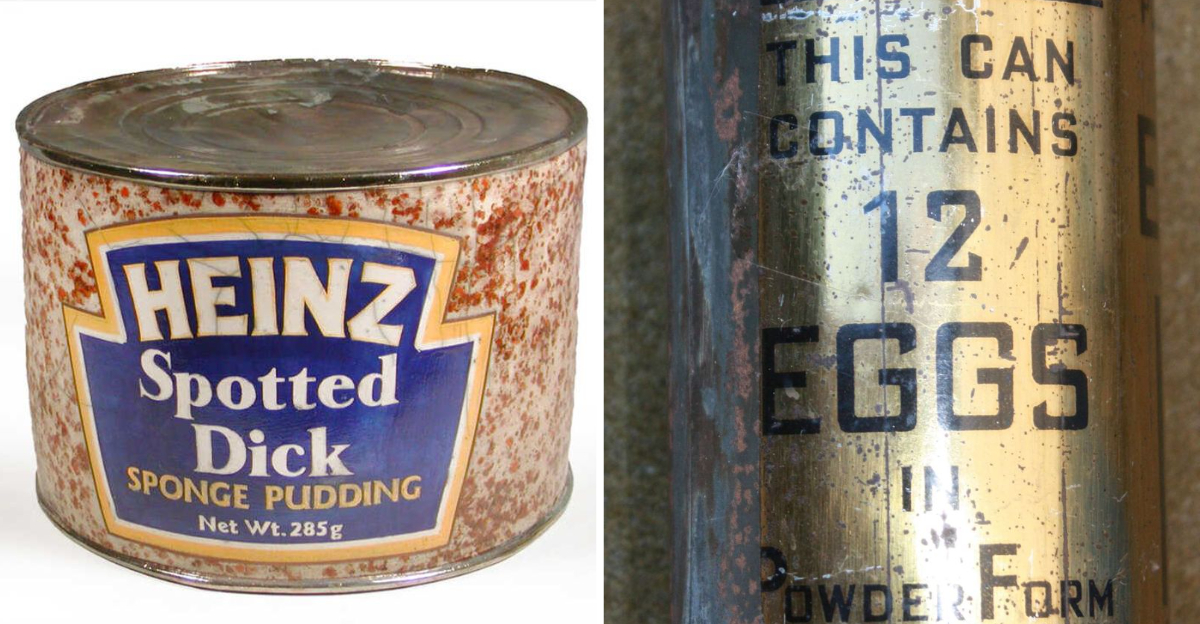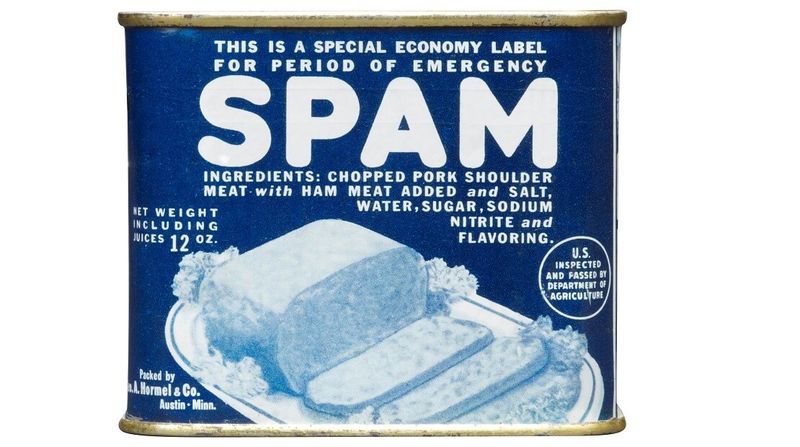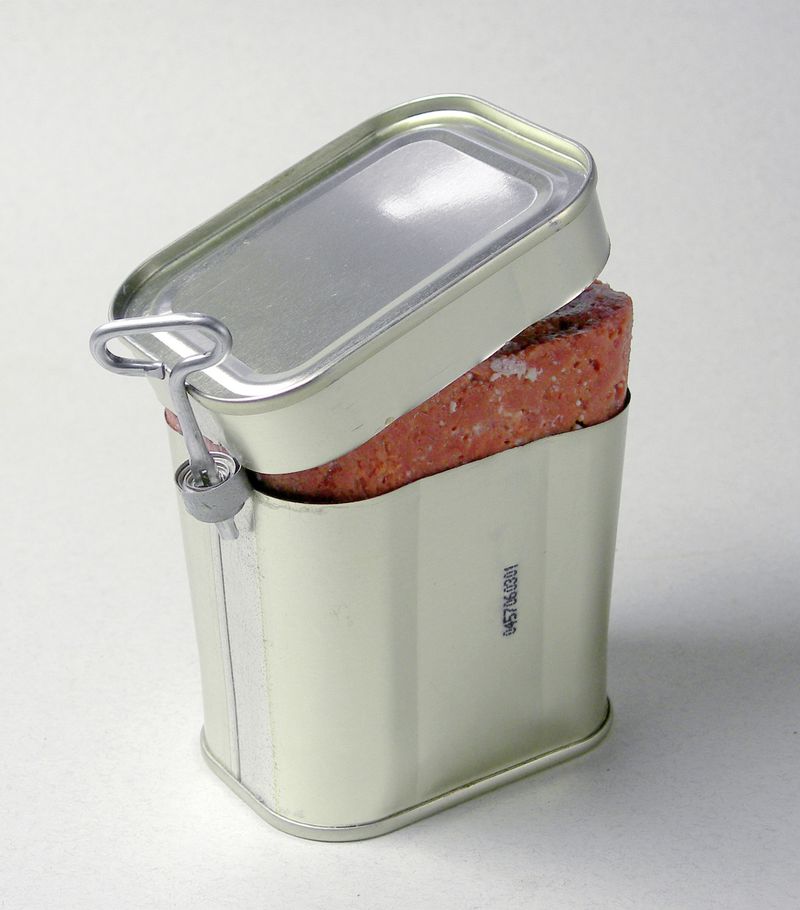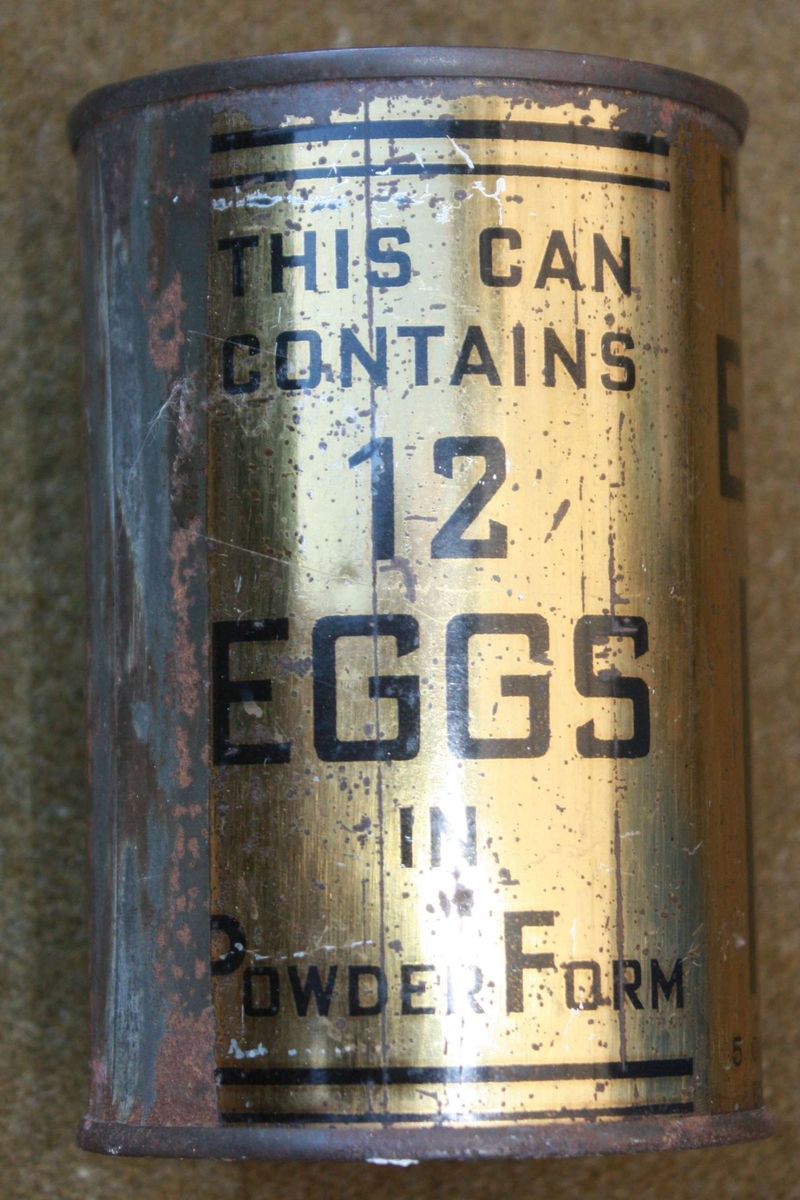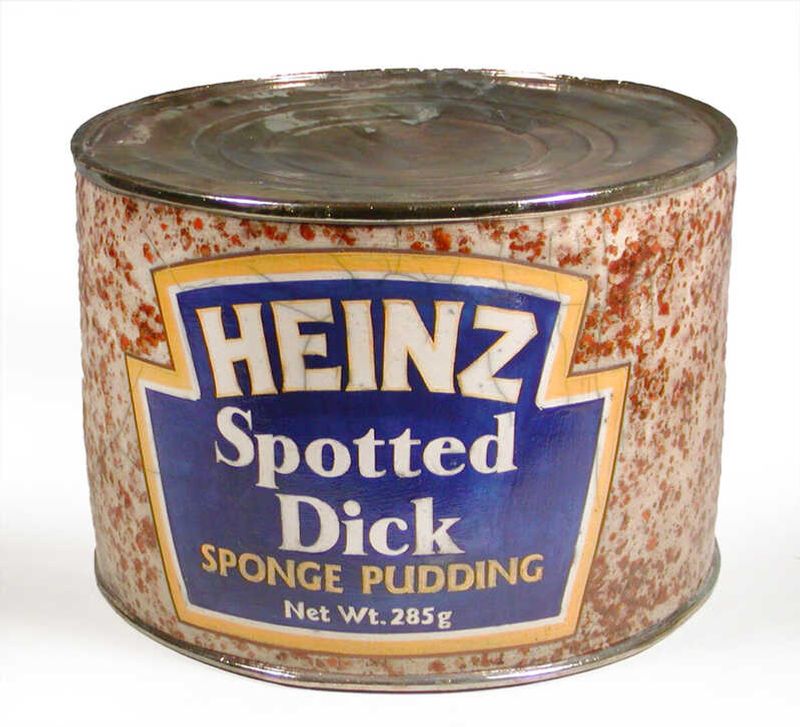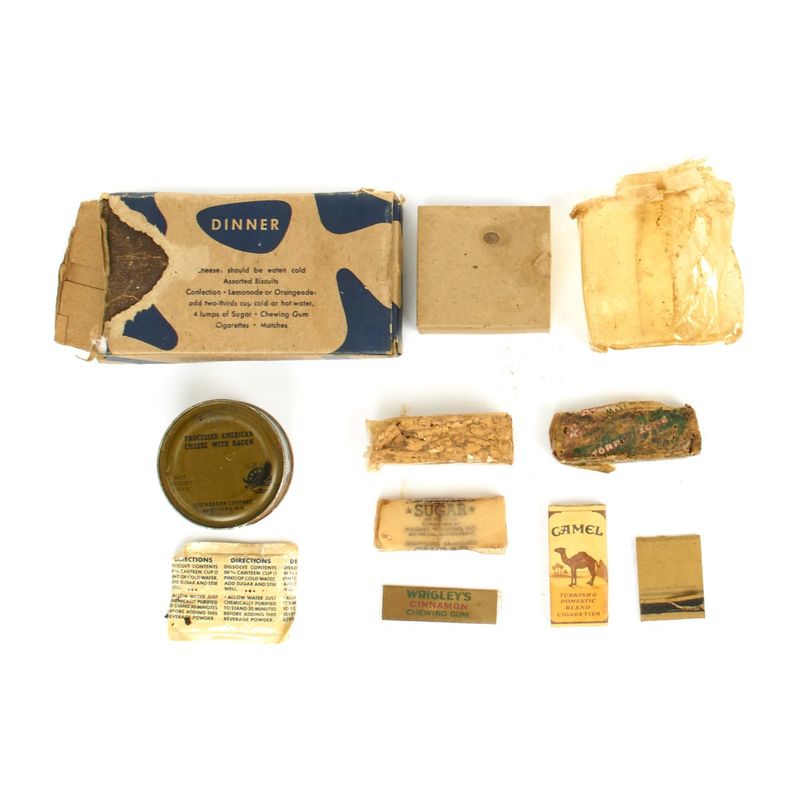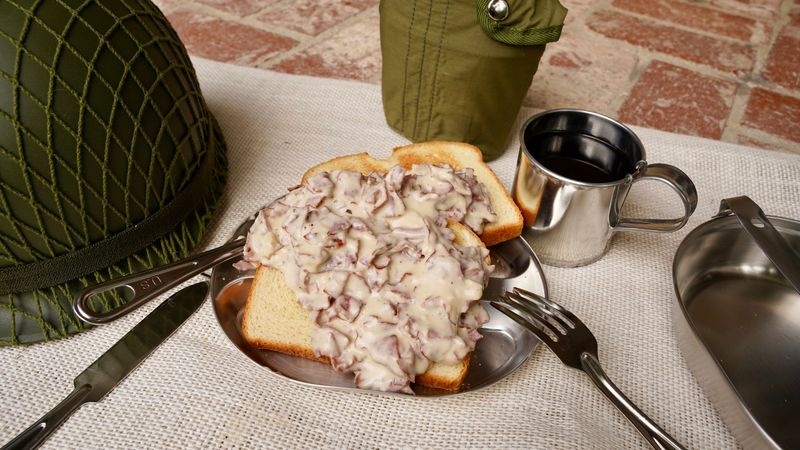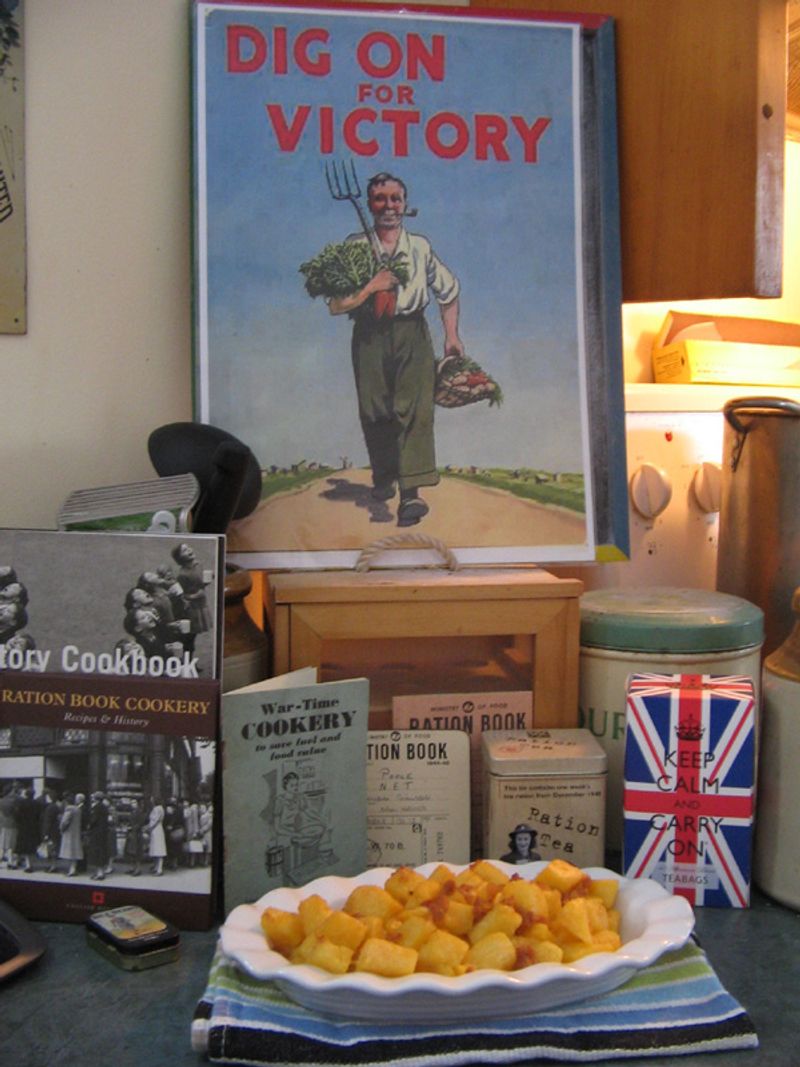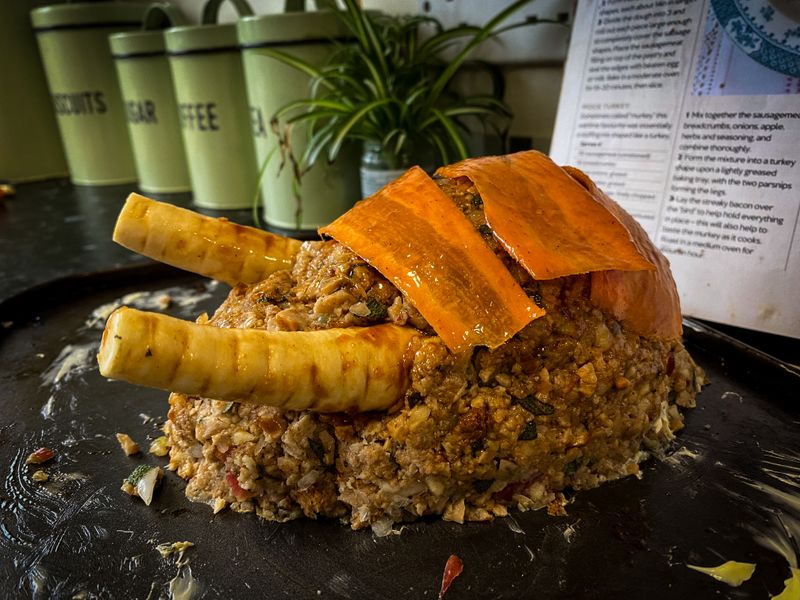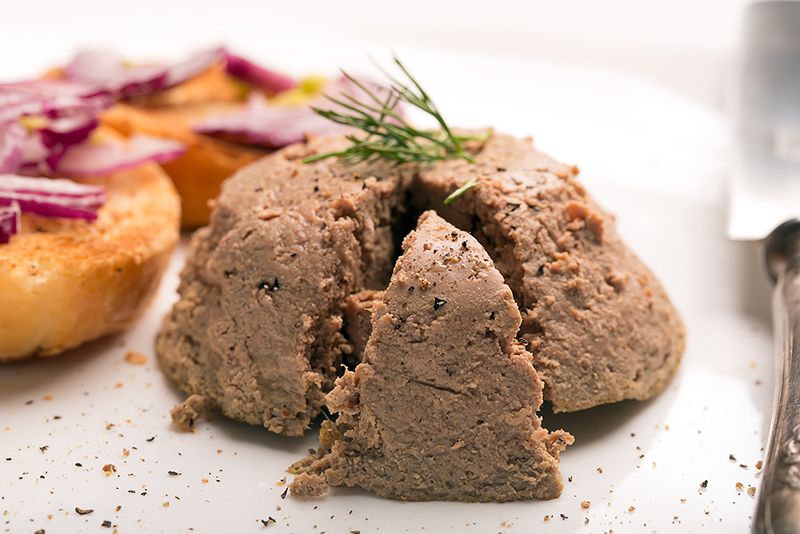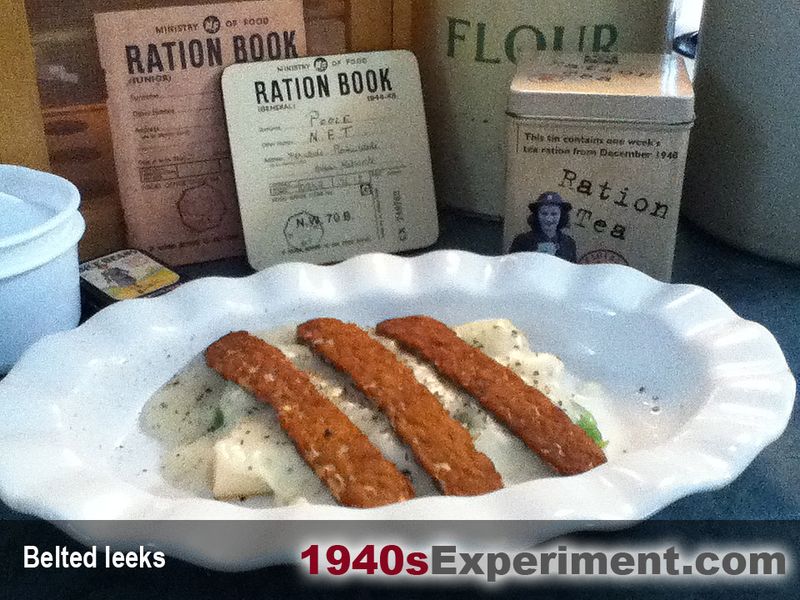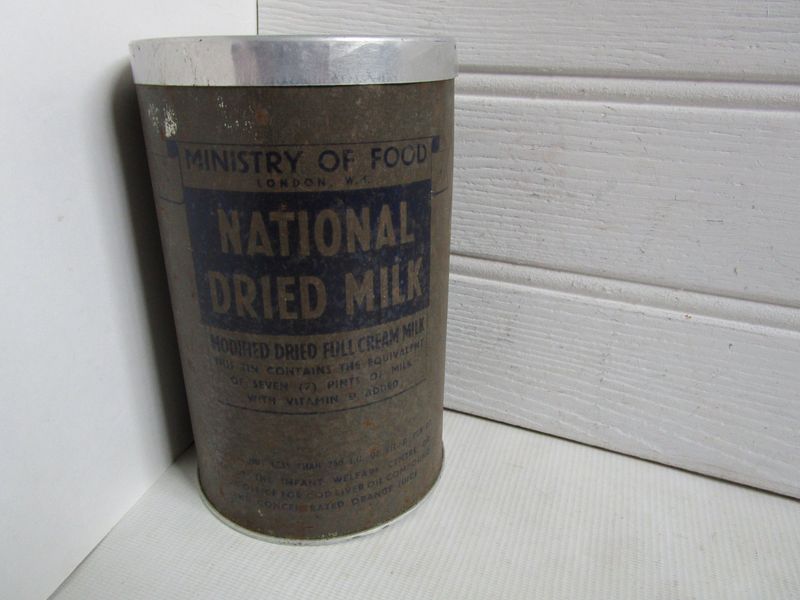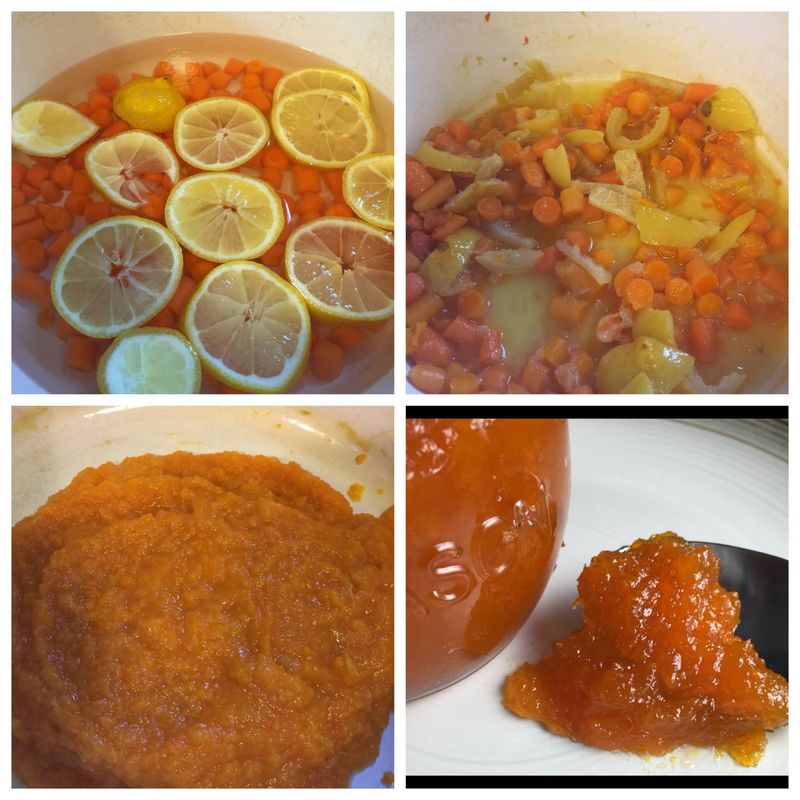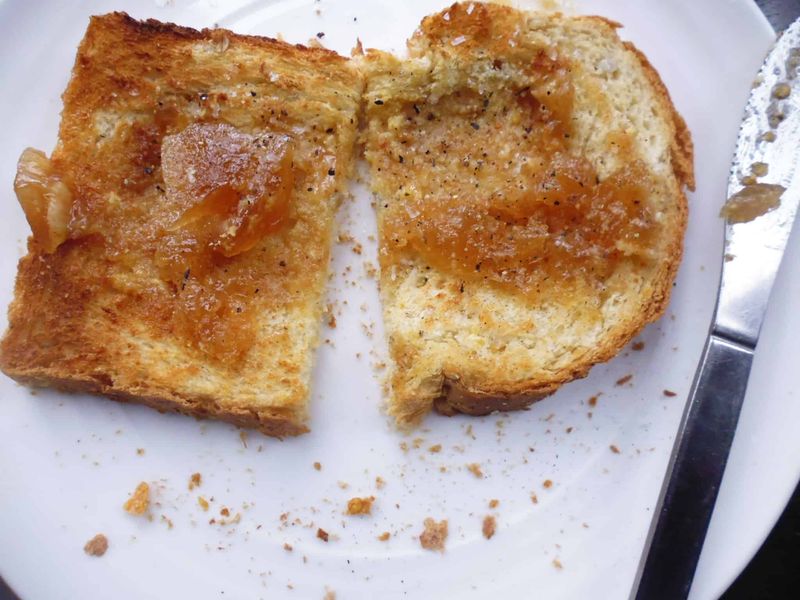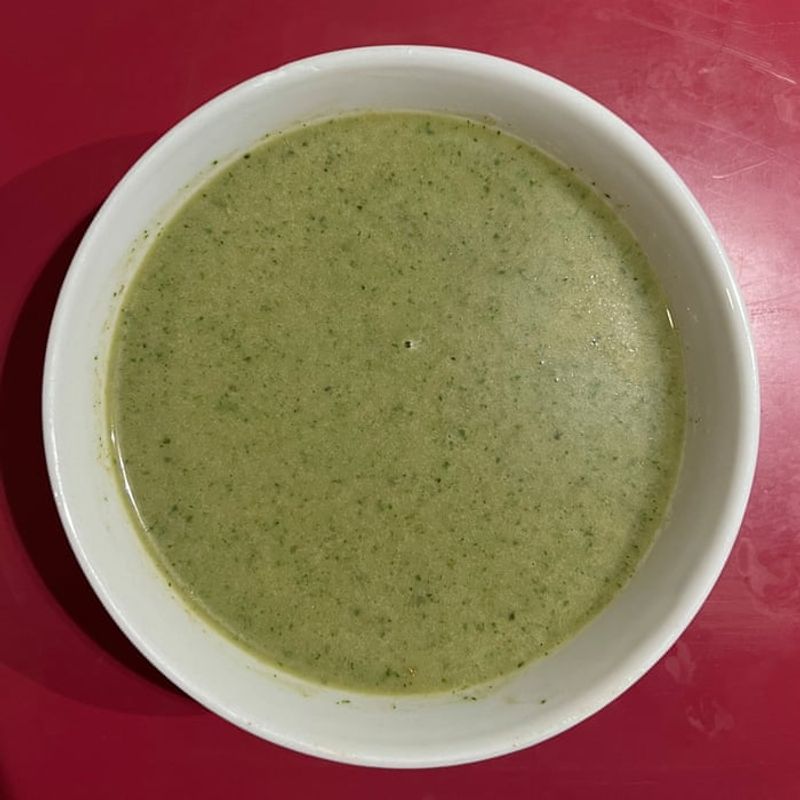When World War II turned the world upside down, people had to get creative with their meals. Food rationing meant regular favorites disappeared from shelves, forcing families to make do with strange substitutes. Soldiers had it even worse, surviving on portable rations designed for durability rather than taste. What kept millions alive during those desperate years would make most of us gag today.
1. Hardtack Biscuits
Sailors called them ‘tooth dullers’ for good reason. These rock-hard crackers could survive years at sea but were nearly impossible to eat without soaking. Made from just flour, water and salt, hardtack had remained virtually unchanged since the Civil War. Breaking one required serious effort—soldiers joked they made better weapons than food. The worst part? Weevils and other insects frequently took up residence inside, adding unwanted protein to each bite. Veterans developed creative coping methods: pulverizing them into soup thickener, soaking them in coffee, or frying the softened pieces in whatever fat was available. Modern teeth wouldn’t stand a chance.
2. Spam Overload
During the war, over 150 million pounds of Spam reached soldiers annually—enough to build a wall of meat from California to Berlin. This pink mystery brick became so ubiquitous that troops received it for breakfast, lunch, and dinner, often unheated straight from the tin. Pacific theater soldiers dubbed it ‘ham that didn’t pass its physical.’ The gelatinous coating and uniform texture made many queasy, but it was that or go hungry. Hawaiian and Pacific Islanders still embrace Spam today—Stockholm syndrome, perhaps? Soldiers created countless variations out of desperation: Spam and powdered eggs, Spam sandwiches, fried Spam, cold Spam on crackers. No wonder they called it ‘Special Army Meat.’
3. Bully Beef (Canned Corned Beef)
Opening a tin of Bully Beef released a distinctive metallic-meat smell that veterans would recognize decades later. The gelatinous block slid out with a wet ‘schlop,’ revealing a salt-cured meat product that looked suspiciously like wet cat food. British soldiers received so much of this tinned terror that they created an entire vocabulary around it. The jelly-like fat that surrounded the meat was particularly reviled, though it provided crucial calories in winter. Troops joked that the cows must have died of old age before being processed. Many developed ‘Bully Beef thumb’—cuts from the razor-sharp tin edges that became infected in battlefield conditions.
4. Powdered Eggs
Nicknamed ‘wall paint’ by disgusted GIs, these dehydrated yellow flakes transformed into something vaguely egg-like when mixed with water. The sulfur smell alone could clear a mess tent in seconds. Soldiers described the reconstituted result as ‘scrambled rubber bands’ with a gritty, chalky texture that no amount of salt could disguise. At home, housewives hid the powder in cakes and cookies to avoid family revolts. The psychological impact was real—many veterans refused to eat eggs for years after the war. One soldier wrote home: ‘The chickens responsible for these eggs must have died of shame.’
5. Canned Spotted Dick
British soldiers opened these tins with a mix of dread and gratitude. The dense, steamed pudding contained beef suet (raw fat) and dried currants, creating a heavy dessert that could survive battlefield conditions. When fresh from the can, it resembled a sad, sweaty sponge with mysterious dark spots—hence the unfortunate name. Soldiers ate it cold or heated it over makeshift stoves. Though it provided much-needed calories, the metallic aftertaste and greasy mouthfeel made it a last resort for hungry troops. Modern palates would struggle with both the concept and execution of this peculiar pudding.
6. K-Ration Cheese
American soldiers unwrapped K-ration cheese with trepidation. The small, waxy yellow brick remained unchanged whether in Arctic cold or Pacific heat—a scientific miracle and culinary disaster. Veterans described it as ‘aged government cheese with the texture of car wax.’ The cheese came paired with stale crackers that somehow managed to be both soft and brittle. Some soldiers swore it was actually repurposed packaging material. The taste lingered for hours, leaving a chemical aftertaste that water couldn’t wash away. Resourceful GIs discovered it burned steadily when lit, serving as emergency candles during nighttime operations—perhaps its most useful quality.
7. S.O.S. (Chipped Beef on Toast)
Military mess halls served this infamous creation so regularly that its vulgar nickname—’S**t on a Shingle’—became standard military vocabulary. Paper-thin slices of salted, dried beef floated in a paste-like white sauce atop soggy toast. The salty assault on taste buds was so intense that veterans claimed it could ‘raise the dead or preserve the living.’ Most concerning was the meat’s origin—rumors suggested it came from animals too old or tough for any other purpose. Despite universal hatred, S.O.S. provided protein and calories needed for combat. Many veterans developed a strange nostalgia for it, though modern attempts to recreate the experience usually end with one bite and a quick trip to the trash.
8. Turnip Surprise
British families facing severe meat shortages turned to the humble turnip as a desperate protein substitute. These white, bitter root vegetables were mashed, mixed with precious bread crumbs and shaped into sad, gray patties meant to resemble meat. Children particularly dreaded ‘Turnip Surprise’—the surprise being it was turnips yet again. The vegetable’s naturally bitter flavor intensified when old or improperly stored, which was often the case during wartime. Home economists promoted them in government pamphlets with forced enthusiasm: ‘Versatile turnips provide vitamins and satisfaction!’ Satisfaction was rarely achieved. The watery, slightly fibrous texture combined with a lingering bitterness made each bite a test of patriotic resolve.
9. Mock Goose
Holiday dinners during wartime required imagination. ‘Mock Goose’ emerged as a sad substitute for traditional Christmas meals—a loaf made from potatoes, apples, and onions shaped vaguely like poultry. Families would gather around this potato impostor with forced smiles. The outer layer crisped up nicely, but the inside remained a mushy, confused mixture. Some versions included a bread stuffing center in a valiant but ultimately futile attempt at authenticity. Children were told to ‘pretend it’s goose’ while adults reminisced about pre-war feasts. The dish’s only redeeming quality was that it used ingredients most families could actually obtain with their ration books, unlike actual meat.
10. Liver Loaf
Government nutritionists pushed organ meats as nutritious alternatives when prime cuts disappeared. Liver Loaf became the nightmare of children across Britain and America—a gray, pâté-like creation that quivered unappetizingly on the plate. The smell alone cleared rooms. Made from ground liver, onions, and whatever fillers were available, it represented peak wartime desperation. Parents enforced a ‘clean plate’ policy despite theatrical gagging from their offspring. One wartime child later recalled: ‘We knew things were bad when Liver Loaf appeared. Mother would serve it with a grim expression that dared us to complain.’ The iron-rich, metallic flavor lingered for hours, a reminder of sacrifice with every swallow.
11. Macon (Mock Bacon)
Bacon lovers faced cruel disappointment with the introduction of ‘Macon’—thin strips of pressed mutton dyed with food coloring to resemble bacon. The wartime substitute looked vaguely bacon-like until cooked, when it shriveled into unrecognizable leathery strips. British butchers tried enhancing it with smoke flavor, but nothing could disguise the fundamental wrongness. The texture was simultaneously rubbery and crumbly, while the flavor carried sheep’s distinctive gaminess with none of pork’s satisfying richness. Government posters cheerfully proclaimed: ‘Macon makes a hearty breakfast!’ Families disagreed. When real bacon finally returned after the war, people celebrated as if a national holiday had been declared.
12. Dried Milk Horrors
School children dreaded milk time during the war years. Instead of fresh milk, they received lukewarm cups of reconstituted powder that formed mysterious lumps and an unappetizing skin on top. The smell alone—somewhere between chalk and sour cream—triggered gag reflexes. Mothers tried everything to make it palatable, from adding vanilla to mixing it with cocoa powder. Nothing could disguise the fundamental wrongness of its thin yet grainy texture and metallic aftertaste. Government pamphlets claimed it contained ‘all the nutrition of fresh milk!’ Children remained unconvinced. Many adults who grew up during wartime still shudder at the memory of being forced to drink their entire cup before being excused from the table.
13. Carrot Marmalade
When fruit became scarce, British ingenuity produced carrot marmalade—a bright orange spread that looked like traditional marmalade but confused taste buds with each bite. Made from grated carrots, lemon rind, and precious sugar rations, it represented wartime adaptation at its most creative. Government propaganda claimed children loved it. Reality proved otherwise. The texture was oddly stringy, and the vegetable’s earthiness fought with the citrus for dominance. Wartime recipe pamphlets enthusiastically suggested spreading it on toast for ‘a bright start to your day!’ Breakfast became a patriotic duty rather than a pleasure. The Ministry of Food even created a cartoon character, Doctor Carrot, who promoted such concoctions with the slogan ‘Carrots keep you healthy and help you see in the blackout!’
14. Bread and Dripping
Nothing symbolized wartime austerity like bread and dripping—slices of often stale bread spread with congealed animal fat collected from previous cooking. During severe rationing, this became breakfast, lunch, and sometimes dinner. The fat, saved in a container kept by the stove, turned white and waxy when cold. Children particularly dreaded finding bits of unknown meat suspended in the spread. Some families added salt or herbs to improve flavor, but nothing could disguise its fundamental nature. The texture ranged from creamy to waxy depending on temperature, but always left a greasy film in the mouth. Despite its unappetizing qualities, bread and dripping provided essential calories when other options disappeared, literally keeping millions alive through the darkest days.
15. Nettle Soup
Foraging became essential when groceries emptied, leading desperate families to harvest stinging nettles from bombed-out lots and countryside hedgerows. Gathering required thick gloves to avoid painful stings, but hunger proved a powerful motivator. The resulting soup looked alarmingly like pond water—a murky green-brown liquid with floating leaf bits. Flavor-wise, it combined spinach’s earthiness with a metallic undertone and peculiar sliminess that coated the mouth. Government pamphlets praised its high iron content while glossing over its bitter taste. Children particularly struggled with nettle soup, often sitting at the table long after adults finished, engaged in silent standoffs with bowls of green glop. The memory of nettle harvesting expeditions remains vivid for many war survivors.
